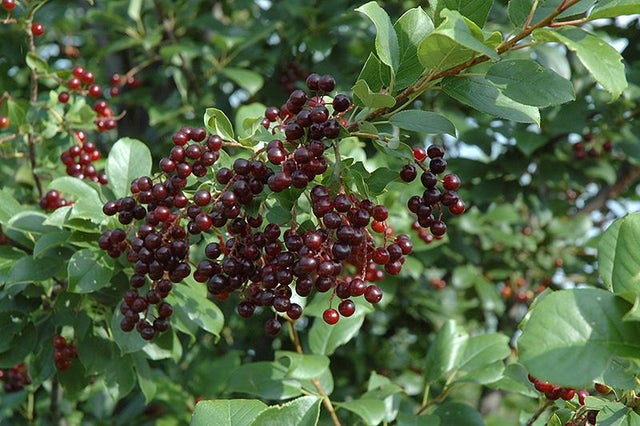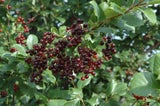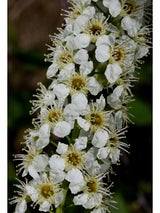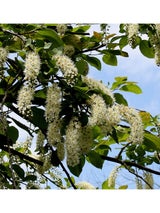- Fruit Shrubs
- >
- Chokecherry
Chokecherry
A large, deciduous or small understory tree chokecherry grows 20-30 ft tall and often forms thickets. Dense clusters of white flowers are followed by red or blackish fruit ripening to dark purple from August to September in the north.
As the common name suggests, chokecherries are astringent or puckery, especially when immature or raw; but they can be made into preserves, jelly, and other unusual canned items like barbeque sauce.
Chokecherry is widely regarded as an important wildlife food plant and provides habitat, watershed protection, and species diversity. Fruits, leaves, and twigs are utilized. Large mammals including bears, moose, coyotes, and deer use chokecherry as browse. Chokecherry is also a food source for small mammals and many birds.
Remarkable for their value to wildlife, shrubs and trees in the genus Prunus rank third in the number of Lepidoptera that are supported on the foliage. This includes five species of butterflies such as the Coral Hairstreak, Eastern Tiger Swallowtail and Red-spotted Purple, and 10 species of giant silk moths such as Cecropia moth, Polyphemus moth, Imperial moth and Io moth. The aromatic flower clusters are very popular with early pollinators.
18"-24" B-R seedlings.
***Favored to adapt well to climate change***



